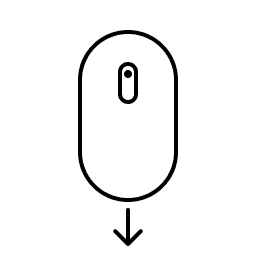Snippets about: Transportation
Scroll left and right !
"Cities Need Transit to Be Walkable, But Transit Needs Walkability to Be Successful"
"While walkability benefits from good transit, good transit relies absolutely on walkability. Most transit trips begin on foot - if people can't walk to the stop, they won't ride. And once they get off the bus or train, people are pedestrians again. If their destination isn't within a convenient walk, transit won't get them there...As a result, while walkability benefits from good transit, good transit relies absolutely on walkability. This simple fact is often the key to transit's success or failure in a community. And yet it is so frequently ignored by transit agencies that focus only on the route and the vehicle, ignoring the pedestrian experience to and from the stops."
Section: 2, Chapter: 4
Book: Walkable City
Author: Jeff Speck
Walkability and Transit Go Hand-in-Hand
Walkability and transit are inextricably linked. In most cities, every transit trip begins and ends with a walk, so the quality of the pedestrian experience to and from transit stops is critical. At the same time, transit dramatically extends the distance people can travel without a car, enabling a lifestyle where most trips can be taken on foot and occasional longer trips made by bus or train.
Cities with the highest transit ridership also have the highest walking rates - the two modes are mutually reinforcing. Likewise, cities that neglect their buses and trains inevitably succumb to automobile dominance and unwalkable landscapes. Investing in transit is investing in walkability.
Section: 2, Chapter: 4
Book: Walkable City
Author: Jeff Speck
Most New Urban Transit Systems in the US Have Failed Due to Poor Walkability
Time after time, American cities that build expensive new rail lines and transit systems are dismayed when ridership comes in far below projections. Dallas provides a cautionary tale:
- By 2015, with 62 miles and 55 stations in operation, the light rail system was carrying 30% fewer riders than the old bus system it replaced. For every 4 transit trips in 1990, there were only 3 in 2015 - despite billions invested.
- The reason is that DART ignored walkability around its stations. Many stops are surrounded by parking lots, vacant land, and arterial roads hostile to pedestrians. The lack of housing, jobs and amenities within walking distance of transit means most people still have to drive to meet their daily needs.
- Building transit without corresponding land use changes to enable walkability is a recipe for failure.
Section: 2, Chapter: 4
Book: Walkable City
Author: Jeff Speck
Parking Is a Hidden Force That Shapes Our Cities
Parking is one of the biggest determinants of urban form and function, yet it is often an afterthought in planning and design - and is frequently done badly in ways that undermine walkability. Based on the research of Donald Shoup:
- Parking is the single largest land use in many cities. In some downtowns, parking lots and garages cover more than half of the land area, creating dead zones in the pedestrian environment.
- Most cities require a minimum number of off-street parking spaces for every land use, forcing a surplus of parking that spreads things apart and subsidizes driving. Even dense cities often have 2-3 times more parking than needed.
- "Free" parking is anything but - it is embedded in the price of almost everything we buy, imposing enormous hidden costs on society. A single structured parking space costs $20-60K to build and $500-2500/year to operate.
Section: 2, Chapter: 3
Book: Walkable City
Author: Jeff Speck
Bicycling Is the Most Efficient, Economical and Sustainable Transportation
For most of the 20th century, bicycling was seen as a fringe mode in American cities, marginal at best and a nuisance at worst. Only in the last decade has biking begun to take its rightful place as a legitimate, even advantageous, way to get around. Bikes are:
- Astonishingly efficient in their use of space and energy. A protected bikeway can move 5-10x more people than a car lane twice as wide. Biking takes just 1/5 the energy of walking the same distance.
- Inexpensive for both user and society. Quality bikes cost a few hundred dollars and require no fuel and little maintenance. A mile of protected bikeway costs a fraction of a mile of roadway.
- Healthier for people and the planet. Biking provides daily exercise, doesn't pollute and decreases the risk of car crashes. It's a key way to make transportation more sustainable.
Section: 2, Chapter: 6
Book: Walkable City
Author: Jeff Speck


